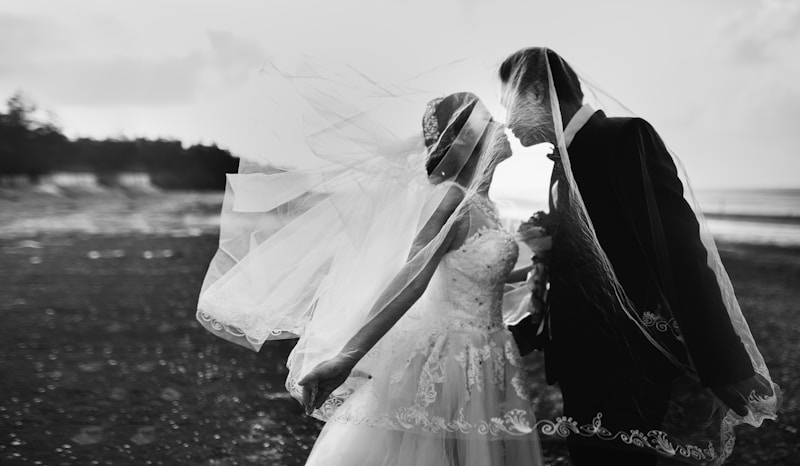Navigating Average Costs for Weddings: A Comprehensive Guide
Navigating Average Costs for Weddings: A Comprehensive Guide
Understanding the Costs Involved in Planning a Dream Wedding
Planning a wedding is a thrilling, yet daunting task. One of the most significant aspects couples face during this process is managing their budget. With various expenses to consider, understanding average costs for weddings is crucial to ensure that your special day is both memorable and financially manageable. In this article, we will explore average wedding costs, break down essential expenses, and provide tips on navigating your wedding budget effectively.
Breaking Down the Average Wedding Costs
The average cost of a wedding can vary greatly depending on several factors such as location, guest count, and the couple's preferences. According to industry reports, the average wedding in the United States can range anywhere from $30,000 to $35,000. However, there are ways to adjust this figure based on your specific needs.
| Expense Category | Average Cost |
| Venue | $6,000 - $12,000 |
| Catering | $4,500 - $7,500 |
| Photography & Videography | $2,500 - $5,000 |
| Wedding Attire | $1,500 - $3,000 |
| Flower & Decorations | $2,000 - $4,000 |
| Entertainment | $1,000 - $3,500 |
| Miscellaneous Expenses | $3,000 - $5,000 |
The Major Contributors to Wedding Costs
When planning a wedding, several factors can contribute to the overall expenses. Understanding these categories can help you allocate your budget effectively. Here are some of the major contributors to wedding costs:
1. Venue
The wedding venue often takes up a significant portion of the budget. Depending on the location, type, and season, costs can vary widely. Popular venues may charge premium prices, particularly during peak wedding season, which typically runs from June to October.
2. Catering
Catering is another substantial expense. The average cost of catering can depend on the type of service you choose, whether buffet, plated dinner, or family-style. It is essential to consider menu options and guest count when budgeting for this expense.
3. Photography & Videography
Capturing the precious moments of your wedding day requires skilled professionals. Photography and videography services can range from moderately priced packages to high-end options, depending on the photographer's experience and reputation.
4. Wedding Attire
Your wedding attire is a significant part of the overall theme and style of the day. The bride's dress, groom's suit, and attire for the bridal party can quickly add up. Consider shopping off-season or at sample sales to save on costs.
5. Flowers & Decorations
Floral arrangements and decorations contribute significantly to the atmosphere of your wedding. From bouquets to centerpieces, the costs can vary depending on the types of flowers chosen and whether they are in season.
6. Entertainment
Music and entertainment are essential for creating an enjoyable atmosphere. Whether you choose a live band, DJ, or other entertainment, always consider your guests' tastes and preferences.
Additional Costs to Consider
In addition to the prominent expenses mentioned above, several other costs may arise during the planning process. Here are some additional costs to keep in mind:
- Wedding Planner: If you choose to hire a wedding planner, fees can range from $1,500 to $5,000 based on their experience and the services provided.
- Transportation: Limousines, shuttles, or other forms of transportation can range from $500 to $1,500 depending on distance and type of vehicle.
- Wedding Rings: The average cost of an engagement ring is about $5,500, while wedding bands can range from $1,000 to $3,000.
- Rehearsal Dinner: Typically costing around $1,000 to $2,500, this event can add a substantial amount to your overall budget.
- Favors and Gifts: Depending on the number of guests, favors and gifts to thank your attendees can range from $200 to $1,000.

Tips for Navigating Average Wedding Costs
Here are essential tips to help you navigate your wedding costs effectively while remaining within your budget:
Set a Realistic Budget
Before diving into your planning, define how much you can comfortably spend on your wedding without incurring debt. Having a set budget will guide your decision-making process throughout the planning stage.
Prioritize Your Expenses
Identify which aspects of your wedding are most important to you and allocate your budget accordingly. For example, you may prioritize photography over floral arrangements. Understanding your preferences will help you make sacrifices in less critical areas to stay within budget.
Research and Compare Vendors
Take the time to research various vendors in your desired category. Get multiple quotes and reviews about their services to ensure you find the right fit for your budget. Do not hesitate to negotiate prices or look for package deals that include multiple services.
Be Mindful of Hidden Costs
Many wedding expenses come with hidden fees. For example, service charges at venues or additional costs for overtime with vendors. Read contracts carefully and ask questions upfront to avoid any surprises later.
Consider Alternatives
Don’t be afraid to consider alternatives that might be more budget-friendly. For instance, hosting your wedding at a family home or a park can save on venue costs. Additionally, consider DIY decor or choosing seasonal flowers to cut costs.
Conclusion
Navigating average costs for weddings requires thorough research, careful planning, and effective budgeting. By understanding the various expenses involved and prioritizing your spending, you can create a beautiful and memorable day without breaking the bank. Remember that your wedding is a celebration of love, and while costs can add up, the most important part is cherishing the day with your loved ones. Always keep in mind the above tips for a successful budgeting journey.
In conclusion, it is crucial to understand that your wedding day is a reflection of your unique love story. Stay true to yourselves and don’t let societal expectations dictate your choices. Happy planning!
